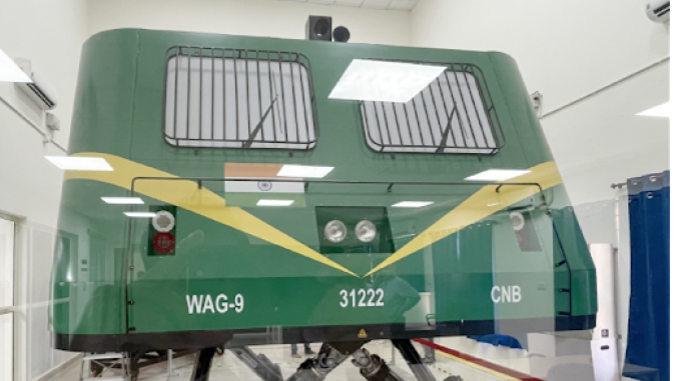
Role of Simulators in Indian Railways Growth Story:
The Indian Railways has been applauded for its humongous growth plans using indigenously developed technology under the Make in India initiative of the Government of India. May it be the 400 plus microprocessor-based Vande Bharat trainsets or the 2000 plus Electric locomotives or the total electrification of the tracks or the implementation of advanced signalling systems like the KAVACH or the use of Distributed power Freight trains or use of information technology for improving passenger services; these systems need to be manned by skilled manpower abreast with these systems and technologies. These investments will generate employment as also contribute to the nation’s wellbeing. The Real challenge lies in training of the projected 2 million employees that will be needed to bring fruit to this national initiative.
Modern training infrastructure to supplement these decisions is critical. The Indian Railways is planning to supplement the investment decisions with modern indigenous training infrastructure. Simulators will play a major role in satisfying this need. The use of rail simulator systems in training and assessment programs improves the quality of the learning process by confronting the trainee driver with a great variety of situations and out of course events. To ensure safety and secure daily operation of railway vehicles, especially in high-speed and long-distance rapid freight transport extensive, qualified and individualized training has become essential. Train simulators address some of the major reasons as detailed below:
New format of passenger trains: Over the years we have been seeing passenger trains in the form of independent coaches which are hauled by a locomotive. The Vande Bharat train, which will now form most of the passenger train landscape, is in the form of a bidirectional train sets.
The train set is one integrated vehicle with distributed traction has all subsystems of the train controlled centrally through a central microprocessor-based Train control and Management system (TCMS). The powertrain, auxiliary systems, door controls, HVAC systems, passenger communication and announcement systems and all interlocked for safe operation of the trains. These systems are totally new for the present-day loco pilots.
- High speed trains: There has been and will further be dramatic increase in the speed of both passenger and freight trains. Skill sets required for controlling trainsets at speeds nearing 200kmph and more are a completely new challenge for the present-day loco pilots. As also, these trains have to be operated within the framework of Zonal G&SR (General and Subsidiary Rules) regulations.
- Modern Signalling systems: increase in speed and size of trains coupled with the awareness of efficiently utilizing the railway infrastructure needs upgraded signalling and rolling stock management systems. Automatic protection system or collision avoidance systems such as the indigenously developed KAVACH have electronics mounted within the drivers cab. Loco pilots across the Indian Railways need to be trained using these systems as part of their routine.
- Troubleshooting and fault finding – since all trains use a common rail infrastructure or permanent way it is essential that the tracks are not occupied due to trains under breakdown. Modern trains and locomotives are built with interlocks across subsystems and controlled through train control and management systems (TCMS). Loco pilots now must be trained in addressing faults quickly and efficiently in the entire train set. This requires knowledge and skill sets across multiple academic disciplines. Special simulators for maintenance and trouble shooting are now an essential component of the training infrastructure.
- Multiple Loco operations for Freight: Controlling longer freight trains at higher speeds and through possibly undulating terrain require special skills in limiting the coupler forces. Simulators are the only means of training loco-pilots.
All the systems have been indigenously developed and are a feather in the cap for the Make in India drive. These Indian solutions require corresponding training and simulation system developed indigenously with full understanding of the local environment.
Product Expertise Source: C.C. Engineers Private Limited | This Product Expertise is a part of our Latest Magazine: Subscribe to our Magazine Today

